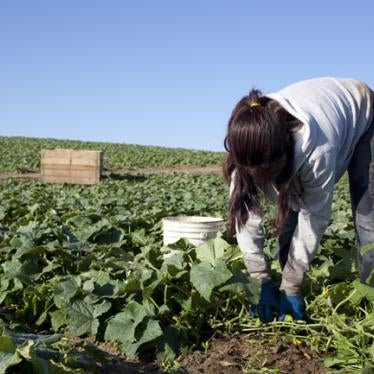Last week, the Canadian government quietly released a three-year plan to phase out use of the toxic pesticide chlorpyrifos.
As Human Rights Watch has reported, the health risks associated with exposure to chlorpyrifos are well-documented. These include increased risk of neurodevelopmental conditions such as learning disabilities and attention deficit hyperactivity disorder (ADHD) following prenatal exposure, and links to cancer, endocrine disruption, and other health problems including dizziness and confusion.
In December 2020, the government’s health agency, Health Canada, recognized these risks and cancelled almost all agricultural uses of chlorpyrifos effective December 2021. For the remaining uses, Health Canada issued a data call-in notice under the Pest Control Products Act. Registrants of chlorpyrifos failed to satisfy the data requirements and as a result Health Canada cancelled all chlorpyrifos uses and products.
This move is indicative of growing opposition to use of the pesticide in the wake of bans by other governments. Last year, the European Food Safety Authority found there is no safe level of exposure to chlorpyrifos. This led the European Union to ban use of the pesticide in 2020 and adopt tighter limits on food imports with chlorpyrifos residues. Thailand’s ban on the import of foods containing any level of chlorpyrifos will take effect in June.
Most recently, a United States court ordered the US Environmental Protection Agency to ban food uses of the pesticide or retain only those it finds safe. As of April 29, it had 60 days to do so. This decision followed US state-wide bans in Hawaii, Maryland, California, and New York.
Prohibiting use of chlorpyrifos within Canada is a positive step, but the ban does not eliminate risk of exposure to the pesticide, as it does not change the allowable levels for chlorpyrifos residues on food crops. These levels do not adequately reduce risk according to existing science. As Canada continues to trade with countries where chlorpyrifos use continues, its reliance on imported food will risk continuing to expose Canadians to the pesticide despite the domestic ban.
Canada should ensure it is not importing foods laced with chlorpyrifos and tightly restrict allowable residues on food products. Only then can Canadians be sure chlorpyrifos-contaminated food is not ending up on their dinner tables.









